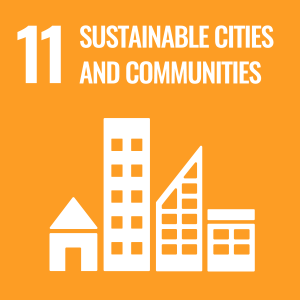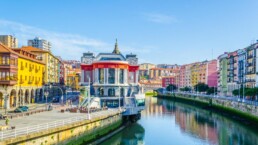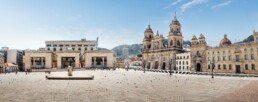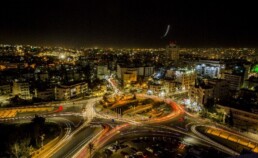BilbaoAccess
OBJECTIVES
Development and implementation of an automatic vehicle access control system for areas with special traffic conditions in order to regulate and control pedestrian preference zones and thus facilitate coexistence in these areas with the mobility needs of different groups (residents, shopkeepers, hoteliers, etc.).
The first area to be integrated into the new control system was the Old Quarter, and other pedestrian areas of the city will gradually be incorporated.
DESCRIPTION OF ACTIONS CARRIED OUT
• Definition of entry conditions and authorised profiles.
• Identification of the specific needs of Bilbao City Council and the different economic activities affected.
• Development of a Control Centre for the correct management, operation and compliance with access conditions.
• Definition of integrations with municipal and extra-municipal information systems.
• Development of a municipal mobile application so that users can manage their authorisations.
• Installation of 30 Control Points in the Old Town area.
• Development of tests in the 3 municipal environments and coordination with the Municipal Police in order to define the applicable sanctioning process.
KEY SUCCESS FACTORS
• Provision of a Citizen Service Office to provide information, both in person and by telephone, on the conditions of access to the Old Town site.
• Use of different communication strategies (information through municipal channels, information leaflets, etc.) to inform citizens about the implementation of the access control system.
• Clear definition of objectives and scope from the beginning of the project.
• Involvement of the different municipal agents: BilbaoTIK, Public Safety and Economy and Finance.
MAIN RESULTS ACHIEVED
• Promotion of sustainable mobility.
• Reducing the level of vehicles circulating in the Old Town, reducing greenhouse gases and the noise generated by them.
• The reduction in traffic has contributed to an increased sense of security among the elderly and increased local economic activity.
• The automation of registration processes has made it possible to speed up procedures for citizens with mobility needs.
• The automation of control processes has reduced fraud generated by unauthorised access to priority areas.
Bogotá Smart Territory
The Bogotá Smart Territory Policy establishes an implementation horizon from 2023 to 2032, promoting sustainable solutions based on data.
OBJECTIVES
Consolidate Bogotá as a Smart Territory by promoting the use and exploitation of data, technology and innovation by the actors and sectors of the territory, to solve problems and generate opportunities that improve people's quality of life.
DESCRIPTION OF ACTIONS CARRIED OUT
The Bogotá Territorio Inteligente 2023-2032 Public Policy is an initiative led by the High Councillor for ICTs of the General Secretariat of the Office of the Mayor of Bogotá. Its formulation process began in 2021 and went through different phases: preparatory, public agenda and policy formulation. As a result of this process, the final version of the action plan of the Bogotá Smart Territory Public Policy was generated. This action plan includes 7 specific objectives, 7 results and 36 products that will be the responsibility of 14 district entities of the Mayor's Office of Bogotá. The policy was approved on 31 May 2023 and is valid for 10 years.
KEY SUCCESS FACTORS
The Bogotá Smart Territory Policy establishes an implementation horizon from 2023 to 2032, promoting sustainable solutions based on data, technology, and innovation, and seeks an intersectoral intervention for the development of a smart territory in Bogotá.
MAIN RESULTS ACHIEVED
During the process of formulating the Bogotá Smart Territory Policy, the insufficient conditions were identified to develop a collective intelligence based on data, technology and innovation that efficiently responds to the city's problems. Sixty joint construction spaces were held with the participation of more than 24,000 people from different sectors, where the problematic situation was characterised, and strategic factors were defined using design thinking methodologies. Subsequently, the action plan was drawn up in 22 virtual roundtables with public servants and feedback was received from the entities, resulting in the approval of the Bogotá Smart Territory Public Policy on 31 May 2023, with 7 objectives, 7 results and 36 products in charge of 14 district entities for a 10-year period.
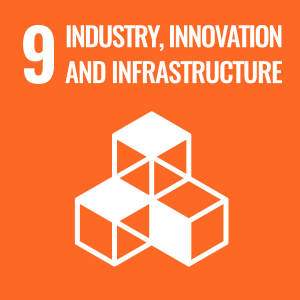
Montevideo Moves Fordward
As part of the programme, two sub-projects stand out: Montevideo Lights up and Montevideo in Real Time.
OBJECTIVES
The project involves mobility, environmental and urban design works that promote job creation through investment and construction of new infrastructure in the city. Two sub-projects stand out as part of the programme: “Montevideo Lights Up” and “Montevideo in Real Time”.
DESCRIPTION OF ACTIONS CARRIED OUT
Montevideo Lights Up, is the City Council's large-scale lighting programme. The city renews and expands its lighting with efficient technology, in balance with the environment, with more habitable, enjoyable and safe spaces.
Montevideo in Real Time consists, first, on the availability of a live map, with the possibility of visualising in real time different devices: buses with GPS, IoT sensors, etc. On the other hand, the aim is to reduce traffic congestion situations at points identified as critical and with a high impact on mobility through different road infrastructure interventions, thanks to the data collected with different types of devices.
KEY SUCCESS FACTORS
From the beginning of the implementation of the project, meetings were held with the neighbours of the different areas to inform them about both subprojects, listen to them and involve them in the actions. The whole process of lighting replacement and congestion information can be viewed in real time through the Montevideo Observatory. (https://montevidata.montevideo.gub.uy/observatorio-montevideo-se-ilumina) and https://congestionvial.montevideo.gub.uy/).
MAIN RESULTS ACHIEVED
Montevideo Lights Up includes the replacement of 70,000 luminaires with LED technology in the streets of the different neighbourhoods (80% of the luminaires by June 2023), 14,000 in the main avenues and the recovery of squares and parks. It also includes management software for these luminaires. Better lighting improves safety, accessibility, and coexistence.
Within the framework of Montevideo in Real Time, a web application has been published that allows the visualisation of information on the state of traffic in Montevideo over the last 15 days, with the aim of reducing, through different road infrastructure interventions, traffic congestion situations at points identified as critical and with a high impact on mobility thanks to the data collected with different devices.
Amman Bus Rapid Transit (BRT) Project
OBJECTIVES
To increase the efficiency and sustainability of public transport by introducing a Bus Rapid Transit (BRT) system to improve transport accessibility and reduce congestion in Amman.
DESCRIPTION OF ACTIONS CARRIED OUT
First, a study was conducted to assess the feasibility of the BRT system in Amman. Next, the optimal routes and necessary infrastructure for the BRT system were determined. Subsequently, dedicated bus lanes, stations and other necessary infrastructure were constructed. A fleet of buses was procured, considering their capacity and environmental sustainability. Finally, pilot implementation of the BRT system was carried out on selected routes and monitoring, and continuous improvement mechanisms were put in place to ensure its efficiency.
KEY SUCCESS FACTORS
The implementation of the BRT system in Amman is based on improving the efficiency and speed of public transport, promoting sustainable transport, increasing accessibility, stimulating economic development, improving the quality of life and increasing public transport safety.
MAIN RESULTS ACHIEVED
Firstly, a system was implemented that benefited daily commuters. In addition, traffic congestion was reduced through the creation of dedicated bus lanes and route optimisation. BRT stations improved accessibility and allowed more people to take advantage of public transport services in a convenient manner. In addition, sustainability was prioritised by using electric or low-emission buses, which resulted in a significant reduction in carbon emissions and an improvement in air quality. The BRT system also succeeded in encouraging a modal shift towards public transport, providing an affordable option for residents, and reducing reliance on cars. The entire project was made possible through the collaboration and participation of different stakeholders, including local communities, transport authorities and government agencies.
